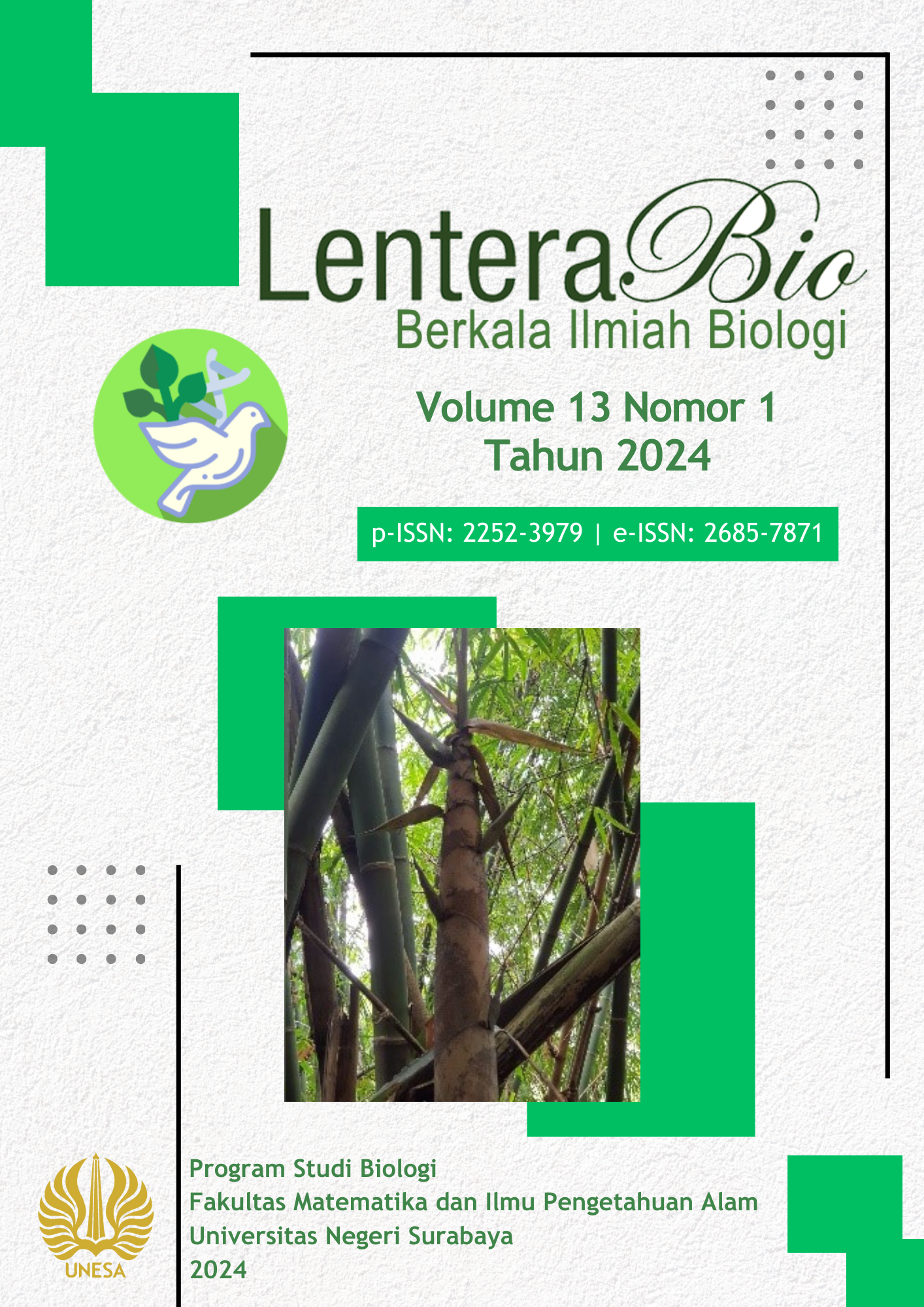Biofungicide Activity of Citronella (Cymbopogon nardus L.) and Water Hyacinth (Eichhornia crassipes) Extracts in Inhibiting the Growth of Curvularia lunata
DOI:
https://doi.org/10.26740/lenterabio.v13n1.p32-43Keywords:
Curvularia lunata, Cymbopogon nardus L, Eichhornia crassipes, biofungicide, Extract interactionAbstract
Curvularia lunata causes economic losses and health problems. Alternative control of C. lunata with bio-fungicides. Lemon grass and water hyacinth have potential as bio-fungicides because they contain geraniol and flavonoid compounds. The purpose was to determine the antifungal activity of citronella and water hyacinth extracts, the optimal concentration, and their interaction in inhibiting the growth of C. lunata. Types of extracts were citronella, water hyacinth, the combination of them in a ratio of 1:1, 3:1, and 1:3 with concentrations of 20%, 40%, 60%, a positive control of 70% propineb, and a negative control of 10% DMSO. As a result, the type and concentration of the extract affected the growth inhibition of C. lunata. The optimal concentration was at the concentration of 20% citronella extract with a colony diameter of 0,87 ± 0,03 cm and the growth-inhibition percentage of 87,06 ± 0,43%, and there was an interaction with the highest value in the combination of citronella and water hyacinth extracts in ratio 3: 1 concentration of 60% with a colony diameter of 0,80 ± 0,00 cm and growth-inhibition percentage of 88,06 ± 0,00% comparable to propineb. Citronella and water hyacinth extracts can be used as alternative bio-fungicides for synthetic fungicides.
Downloads
Published
How to Cite
Issue
Section
License
Copyright (c) 2023 LenteraBio : Berkala Ilmiah Biologi

This work is licensed under a Creative Commons Attribution-NonCommercial 4.0 International License.
Hak Cipta (c) LenteraBio: Berkala Ilmiah Biologi
Karya ini dilisensikan di bawah Lisensi Internasional Creative Commons Attribution-NonCommercial 4.0.
Pemberitahuan Hak Cipta.
Hak cipta dari artikel yang diterima untuk diterbitkan akan diberikan kepada jurnal sebagai penerbit jurnal. Hak cipta yang dimaksud meliputi hak untuk menerbitkan artikel dalam berbagai bentuk (termasuk cetak ulang). Jurnal mempertahankan hak penerbitan atas artikel yang diterbitkan.
 Abstract views: 988
,
Abstract views: 988
, PDF Downloads: 1791
PDF Downloads: 1791











